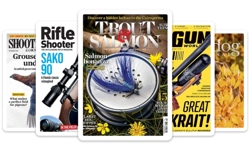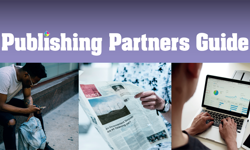Time Out magazine has long been a major player in the London scene. The definitive guide to what’s on where in the capital has been around for 37 years and for most of that time has resolutely been a newsstand magazine, so much so that the company even set up a newsstand distribution company to capitalise on it’s expertise.
Time Out has, in recent years, successfully developed its subscriber base, which today makes up nearly half the paid-for circulation. Time Out has made a huge commitment to subscriptions and they are the major plank of the circulation plans in future years. So how does a magazine go from having 800 subscribers in 1995 to over 33,000 in 2005? And how does it sustain that growth with a 40% increase in circulation and a 25% increase in revenue in the last year?
Why have we grown subscriptions?
1. To sustain circulation in a competitive market.
Having half our circulation base on subscription means we are able to confidently predict and maintain our circulation. With a substantial amount of our revenue coming from our excellent advertising sales, it is vital that we meet our circulation targets. Subscriptions protect us from the vagaries of the newsstand and mean our readers are less likely to pick up an alternative medium on a whim; tying them into buying Time Out means we maximise our market reach.
2. To extend the Time Out brand.
Time Out is now a global brand. With magazines in London, New York and Chicago, thirteen licensed editions in regions as diverse as China, Russia, India and the Middle East, as well as 80 travel and lifestyle guides, it is increasingly important to know who are readers are and what they want from us. Having substantial subscription bases in our key cities is a great source of reader insight for product launches as well as finding out what our audience want more or less of editorially.
3. Implement predictable and accurate financial and circulation planning.
The disciplines of subscriptions marketing mean that we can very accurately establish an acceptable acquisition cost for each reader, determine the ROI and define the life time value we can expect from each subscriber or cohort of subscribers. As the pressure on marketing budgets increases in all sectors, being able to make highly accurate predictions about expected circulation and revenue over time is invaluable.
As it becomes increasingly difficult to determine the actual revenue value of point of sale or brand marketing, the use of strict direct marketing protocols means it is easier to make a case for greater spend. We can easily and flexibly test new propositions, offers, target audiences and creative without jeopardising our circulation. Equally, circulation modelling tools are now sophisticated enough to give very clear predictive growth that isn’t reliant upon a good cover.
4. Exploit cross and up-sell opportunities.
Knowing who and where our readers are means we can segment them according to lifestyle demographics, purchasing behaviour or areas of interest and we can sell them other Time Out products. This is increasingly important as we develop our CRM strategies to broaden our perception of someone who buys into the Time Out brand. A subscriber to the magazine may be interested in a subscription to our paid online sites for example. Equally, if we can find out the travel plans of a user of one of our sites we can sell them a Time Out city guide. Customers expect us to treat them as sophisticated users of our brands and products: it is no longer sufficient to look at our customers as one-off purchasers of our products.
5. Stem occasional readers.
Encouraging our infrequent readers onto a subscription means we build in a higher purchase of each issue.
6. Introduce Time Out to non newsstand readers.
As we have expanded our marketing beyond the remit of the magazine itself we have discovered many people who were not readers of the magazine, but who have been encouraged to take out a subscription and have stuck with us. Timeout.com has been particularly key to this, as we have been able to leverage all sorts of different targeted audiences we would not have otherwise been able to reach economically.
So how did we do it?
* Testing inserts in the magazine
Initially we started to offer subscriptions to our newsstand readers and found them very open to the idea. It was relatively easy to convert many of our most loyal newsstand buyers: many of them had grown up with us and were now quite happy to take on the commitment of an annual subscription. Subscriptions were discounted, but not excessively so and there was no real use of gifts or other incentives. By 2000 there were nearly 9,000 subscribers.
* Building on success
2000 saw a key step change for the circulation strategy of Time Out. The successes of the initial toe-in-the water approach meant that budgets could be secured to undertake significant investment in external direct marketing and investment in professional subscriptions staff. Proper life time value models were established and clear parameters for determining success were put in place. Extensive testing programmes were undertaken to establish the best offer, target audiences and creative offerings.
* Offers and target audience
Need for rapid growth means we use cheap introductory trial offers to get people onto the file, for example: ‘pay for one issue and get eight free’, or ‘pay £5 and get 13 issues’. All offers are direct debit and 85% of our total file pay by direct debit, of which the highest proportion pay monthly. Once they have converted from their trial, the price is 75% of cover price and conversion, after trial, to paid is currently at 75%. Once we have people paying monthly we can expect non cancellation rates to be well over 95%. We have extensively tested both media and lists for direct mail and are constantly seeking new sources of high responding names – a key element of this is the generation of our own data.
* Time Out Premiere Club
Resources were put behind the project and the Time Out Premiere Club was created to enhance the overall experience of subscribing. Each month subscribers are sent a selection of exclusive offers, two-for-one tickets and half price promotions to get the most out of living in London. They also get free access to timout.com/film, a paid-for site. We see this as a vital part of retaining and attracting readers. The experience of subscribing should be much more tangible and interactive than just receiving the magazine each week. The Premiere Club will shortly be launched online, forming the hub of our retention and integrated communications strategy with existing subscribers, as well as being a means of attracting new ones.
* Direct mail and inserts
Direct mail has been central to our rapid growth and we regularly mail up to half a million pieces. As our expertise has grown, we have honed our lists and we now have a hugely successful control pack that delivers the bulk of our new subscriptions each year. We continue to aggressively test new lists, offers and creative and are continually reducing our acquisition cost. Our inserts in the magazine continue to work well for us, although we do now have to support them with gifts and incentives to overcome offer fatigue.
* Email and online
Timeout.com is an important source of subscriptions for us and is a major focus of development in 2005. Managed properly, it forms an invaluable seam of new subscriptions and new prospects. We have approached our online marketing in the same way as our offline, replicating many of the tried and tested offers and creative that have worked for us offline and testing creative with a flexibility that would not be available to us offline.
Key learnings and the future for Time Out circulation
1. When investigating subscriptions as a viable route to market start with your easy wins. Your existing readers are most loyal and many of them will happily pay to have their magazine delivered.
2. Test everything and then test it again.
3. Collect your own data, and tie people into meaningful relationships with you. They may not yet be a subscriber, but they have the potential to become one.
4. Look at the broader picture. What else can you sell to a subscriber? What other magazines or products might you have that a cancelled subscriber might want? Can you get them to recommend a friend?
5. Be honest and transparent with your offers; be consistent with your brand both above and below the line.
6. Get buy-in at the highest level. A serious approach to subscriptions doesn’t come cheaply, but the long term revenue and circulation benefits can be astounding. Culturally many publishing companies cannot see beyond the next ABC, so explaining the relatively slow growth of subscriptions can be difficult.
7. Sell the benefits of a subscription. A subscriber has not only opted to buy your magazine via a different delivery method, they have made a commitment to your brand and to your editorial.
8. Don’t forget them once you have them - even if they are all on direct debit. Your life time value models will only work if you keep them, so do everything you can to make their experience one that matches their expectations.
9. Rapid growth needs careful management and can be addictive, so keep an eye on your retention and be very clear about when you reach profitability on any one offer.
10. Invest in circulation software, as well as more traditional marketing intelligence software. Streamline the number of offers you have out there at any one time – it confuses your audience to have too many and it makes proper analysis a headache.
Subscriptions are now firmly at the heart of Time Out’s circulation strategy and will continue to be. We have also learnt a great deal about the discipline of direct marketing and we have started to consider direct marketing for all sorts of other areas of the business which we would have traditionally approached from an above-the-line starting point. The development of a proper and consistent marketing approach across all touch points with the magazines, the guides and the websites is our next challenge, and if our experience with subscriptions is anything to go by, it should be a great success.
| Time Out circulation director Jim Heinemann writes: Tony Elliott founded Time Out in 1968 and continues to own and run the company to this day. The magazine was launched to provide information about the whole range of cultural activity that was springing up from what was then known as ‘the underground’. The key editorial concept is that the listings are free – send in the details of your event and Time Out publicises it for nothing. But the key editorial ethic is that if you do take an ad it does not guarantee that we will write something nice, or indeed anything at all, about your show, restaurant or gig. Around the listings Time Out built an authoritative and diverse editorial package. Through the late 60s and early 70s Time Out evolved from being A5 fortnightly to an A4 weekly. Distribution was originally through networks that had evolved through the 60s to distribute Private Eye and then the burgeoning underground press. Copies were sold in record stores and bookshops as well as newsagents and on the streets. Fairly rapidly the news trade saw the potential and the magazine went on sale in WH Smith. In the early 80s Time Out faced the challenge of growing up and becoming a mainstream consumer magazine and it was in this period that Time Out started to realise its potential to attract serious revenue from national advertisers. The 90s saw the most commercially successful period for the magazine – the introduction of TV listings and the closure of the competition lead to its highest ever circulation (110,000 ABC) and therefore increased revenue from both sales and advertising. But, toward the end of the decade, this period of growth slowed and was replaced by a steady decline in circulation caused by the emergence of other media that supplied the listings elements of the magazine for free. Time Out started to test selling subscriptions as a way to stabilise the circulation. We had always seen ourselves as a newsstand publication - selling subs only when a reader demanded one. The first target was to sign up 1,000 and so qualify for Royal Mail’s Presstream discount, perhaps a somewhat under ambitious target given that we now post well over one and a half million magazines a year. |










